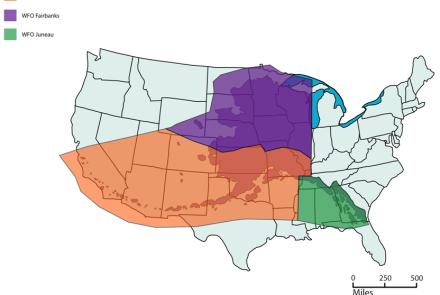
Alaska Summer is Short for the Alder Flycatcher
Each spring, millions of tiny bodies flutter and glide to Alaska from every continent on Earth. In Alaska, songbirds find a summer home, mate, build nests, lay eggs, raise young, replace their commuting feathers, and gorge themselves for the long trip home. Alaska's migrant songbirds pack an incredible amount of activity into a short summer, and the alder flycatcher is perhaps the most efficient of all.
Alder flycatchers are a little bigger than chickadees, the color of green olives, and have a beak surrounded by bristle feathers that help detect the movement of flying insects. The birds spend the majority of the year in Bolivia and Peru, but each spring they head to shrubby bogs in Alaska and northern Canada, where their "grape-ape" song wafts from the forest.
Some alder flycatchers settle in interior Alaska, near Anna-Marie Benson, the senior biologist for the Alaska Bird Observatory in Fairbanks. While studying songbird migration to earn her master's thesis at UAF, Benson searched through Fairbanks weather records to find the latest recorded low of 32 degrees Fahrenheit in the spring, and the first freeze of autumn. These dates-June 13 (1922) and August 3 (1944)- represent a potential frost-free summer of just 51 days, which would be the worst-case scenario for most songbirds with lots to accomplish on a visit north.
Most songbirds arrive in Fairbanks before June 13 and leave after August 3. The alder flycatcher is an exception. Benson discovered that these birds stay in interior Alaska within that narrow window of the shortest possible summer. In contrast to most songbirds, which spend about three months in Alaska, alder flycatchers spend about 48 days here before heading south again. The brevity of the flycatcher's visit makes Benson think Alaska holds a special allure for all songbirds.
"Birds could probably have nesting success somewhere in Canada. Why fly an extra thousand miles to get here?" she said. "There has to be a payoff."
Benson said the alder flycatcher might time its arrival to coincide with the hatching of a large flying insect that would justify a commute across half the planet.
"With the distance they're flying, they've got to be spent when they get here," she said. "They've got to be eating some big fat juicy insect, maybe a wasp, that's not available at other times."
Whatever the alder flycatcher is finding to eat, it's eating a lot of them. A bird that establishes a territory, attracts a mate, breeds, makes a nest, lays eggs, and raises young in less than two months doesn't take any days off. Benson is impressed with all migrant songbirds that take great risks to breed in Alaska. Migrant birds that spend their summers at lower latitudes devote specific times to replacing damaged feathers, fattening up, and taking off for the flight home. Some of the birds Benson studied in Alaska perform each of these energy-sapping tasks at the same time. The alder flycatcher skips the process of replacing worn flight feathers in Alaska, a gamble that allows it to spend less than two months here before returning 7,000 miles to South America.
Why do birds risk so much to head north each year? Benson said Alaska and other northern places offer large territories, plenty of food, and few nest-robbing predators when compared to the tropics and South America. Birds that survive the trip to Alaska may raise a nest full of offspring on their first try, which is much more energy-efficient than laying several sets of eggs after snakes or other birds eat first attempts. And who can blame a songbird for wanting to spend a summer in Alaska? People flock to Alaska each tourist season, but they rarely travel as far as the alder flycatcher.





